In Sri Lanka’s cultural triangle zone, 15km northeast of Dambulla, the spectacular citadel of Lion Rock also known as Sigiriya or Sinhagiri is one of the country’s most spectacular natural landmarks. This tall rock known as Lion Rock, used as an ancient fortress, is a marvel that baffles even modern-day architects and is often referred to as the 8th wonder of the world. It is a must-visit when you’re in Sri Lanka.
The natural phenomenon is an enormous 200m-wide square, 201m tall rock featuring frescoes, graffiti, landscaped gardens and still-functioning water fountains. The rock’s extensive gardens all offer a world of wonder to all those who visit. The many nooks and crannies hold centuries-old cherished secrets.
Importance of Sigiriya
King Kashyapa I, a king’s son by a non-royal concubine, built a fortress on Sigiriya to be impenetrable. Kashyapa I seized the throne after entombing his father, King Dhatusena, within a wall while still alive. The true heir to the throne, Moggallana, fled to South India, as he feared for his life. It was out of fear of an attack that Kashyapa I moved the capital as well as his residence from Anuradhapura to Sigiriya and built his fortress and pleasure palace on top of a rock where no one could reach.
After assembling an army in India, Moggallana returned to Sri Lanka and declared war against King Kashyapa I. However, during the battle, King Kashyapa I’s soldiers deserted him, and he, in turn, committed suicide by falling on his sword.
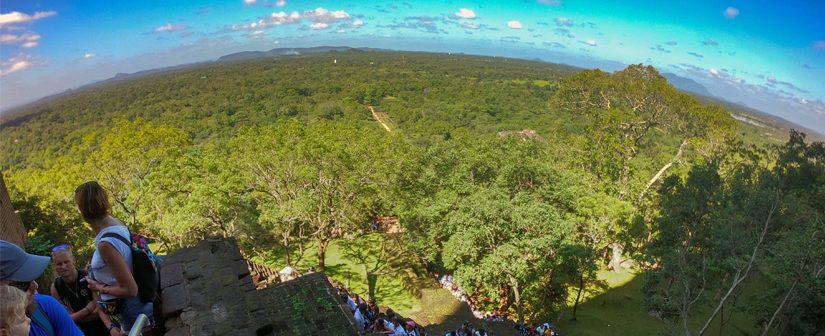
Prehistoric times
Archaeologists believe that the Sigiriya rock was first inhabited during prehistoric times. The rock, formed from the magma of an extinct volcano, provides different shelters, including caves, which hold evidence that it sheltered Buddhist monks and ascetics from as early as the 3rd century BC.
Getting to Sigiriya Sri Lanka
From Kandy, there is a direct bus to Sigiriya (two and a half hours), or you need to catch a bus to Dambulla. Ask around for “Sigiriya” and you’ll be pointed to the right bus. The bus will drop you off at the Entrance/ticketing counter of Sigiriya.
Entry Fee the Lion Rock
The entrance fee per person is Rs5,477 which currently (January 2020) is around US$30
Is there a dress code?
No, there is not. It’s not a temple and any kind of clothing will do. So shorts and flip-flops/thongs are fine. Read Sri Lanka Holiday Guru tip below for our tips on climbing the rock.
Don’t take any plastic or polythene
Just like at Horton Plain in Haputale, Before you enter the park your bags are well checked for polythene and plastic.
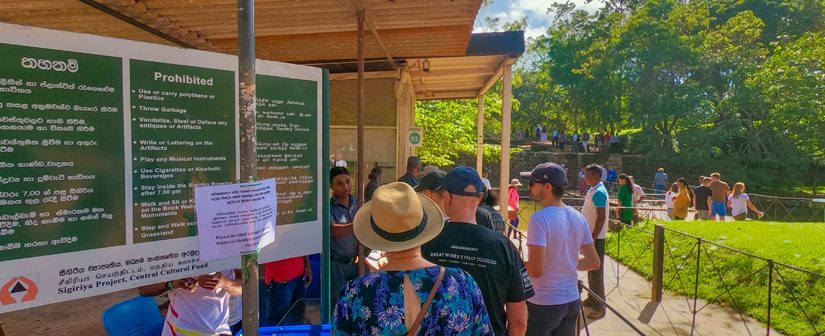
If you want to avoid this hassle carry water in a non-disposable bottle. The authorities get upset with anything that could possibly pollute the park. They aren’t fussy about personal cameras, electronics and video gadgets.
Best time to climb the Lion Rock in Sigiriya
To avoid the crowd and the heat the best time to start climbing is from 06.00 to 07.00 (opening hours 06.30 to 19.00hrs). The climb to the top takes around 45 minutes. Exploring the whole area including the Lion Rock, Sigiriya museum would take two to three hours.
The Lion Rock has so much to see. We’ll run you through some important sites.
The gardens are some of the oldest in the world with amazing water technology
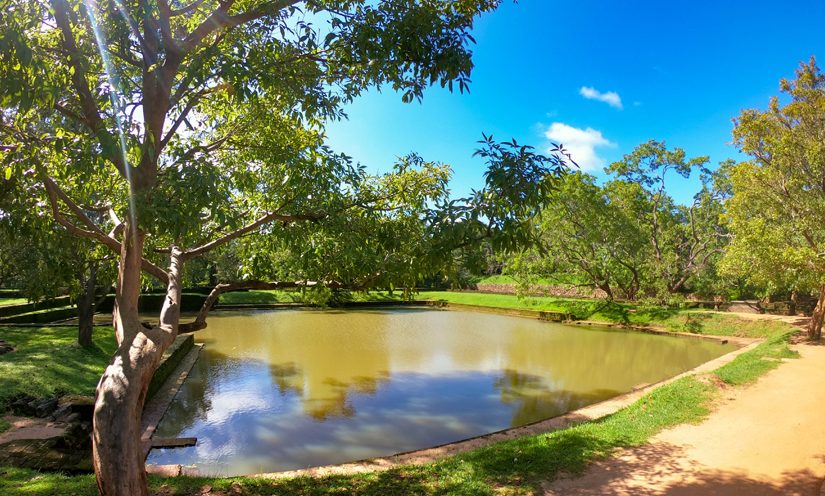
Sigiriya features a series of gardens – of the water, boulder, and terraced varieties – that remain one of the best examples of ancient urban planning. The water gardens consist of ponds, pools, and fountains that are still functional, especially during the rainy season. The boulder gardens comprise large boulders and winding paths, while the terraced gardens consist of a series of terraces, which rise from the pathways of the boulder garden up to the staircases on the rock.
The beautiful frescoes that inspire many
As you start climbing the uneven and sometimes slippery stairs, the second site you’ll get to after the gardens is the frescoes. This is a detour from the main climb, you’ll go up a spiral staircase and then back down.
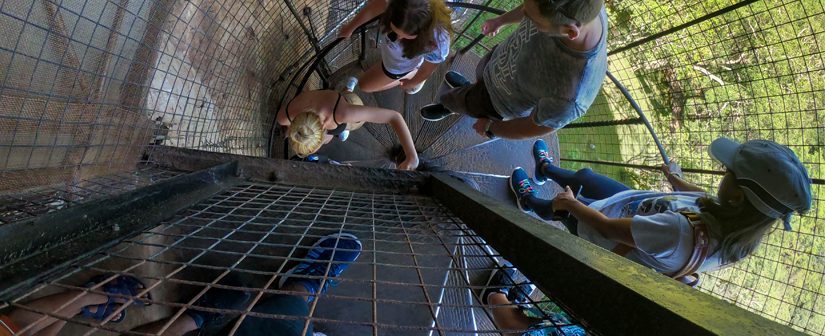
Perhaps the best-known feature of Sigiriya is the colourful murals, located in the “Cobra Hood Cave,” depicting beautiful damsels holding flowers. At one point, an area measuring 140 metres long (459 feet) and 40 metres high (131 feet) featured over 500 of these maidens; however, only a few remain today.
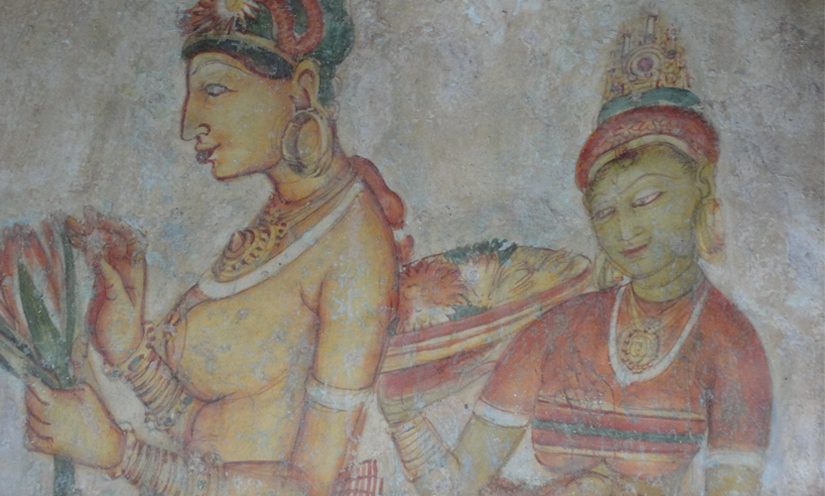
“Graffiti” covers the Mirror Wall
Researchers believe the Mirror Wall was originally highly polished with bee wax and other natural substances so that the king could see himself as he walked by the wall.
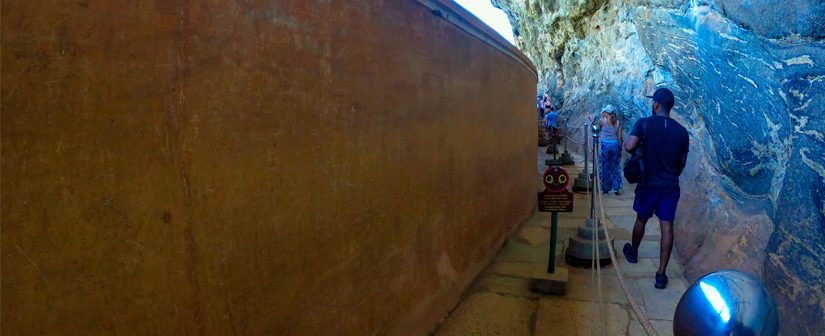
The subject of much adoration, many poets who have visited Sigiriya over the centuries have penned their thoughts, and most of these can still be seen today on the Mirror Wall.
You enter through the Lion Gate
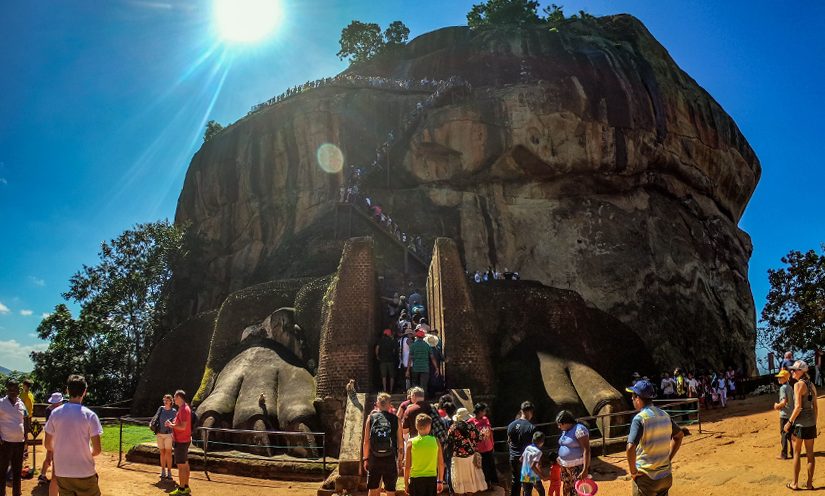
The entrance to the palace is flanked by massive stone paws of a lion, which inspired Sigiriya’s name, “Lion Rock.” The entry to the fortress used to be through the mouth of a lion; however, over time, the head collapsed, leaving only the paws.
The summit is home to ruins, gardens, and incredible views
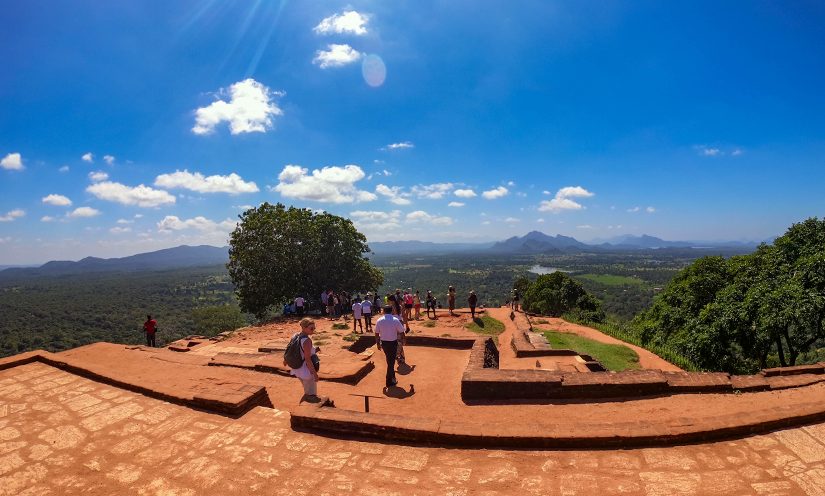
The ancient citadel once sat at the top of the rock, and remnants of a glorious past are still visible today. The foundations, spread over 1.5 hectares, remain intact, as do the terraces and gardens. The summit also features a large pool, made by cutting into the rock, as well as smaller pools made of brick. The view is breath-taking and is fully worth the climb.
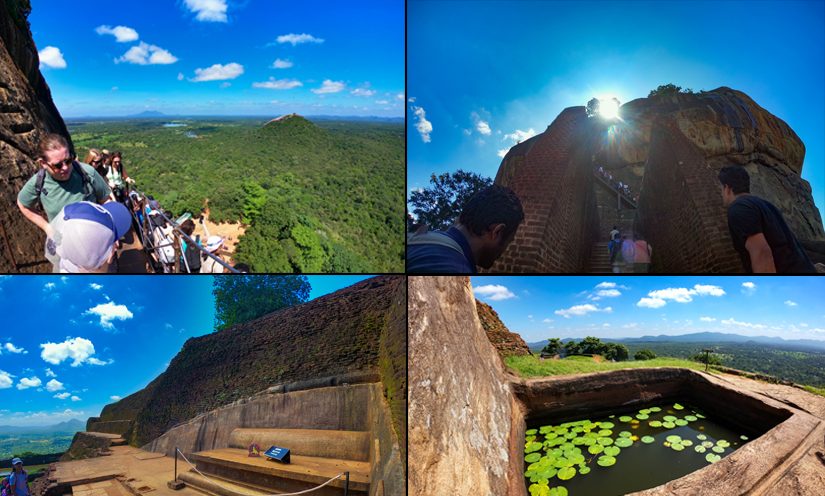
Spend time exploring
More than just climbing to the top, spend time exploring the surrounding caves and ruins, as well as learn about the history at the well-maintained museum.
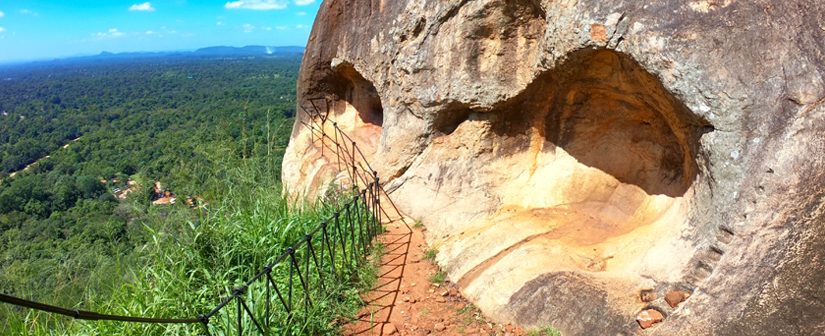
Pidurangala Rock, an alternative to the SigiriyaLion Rock
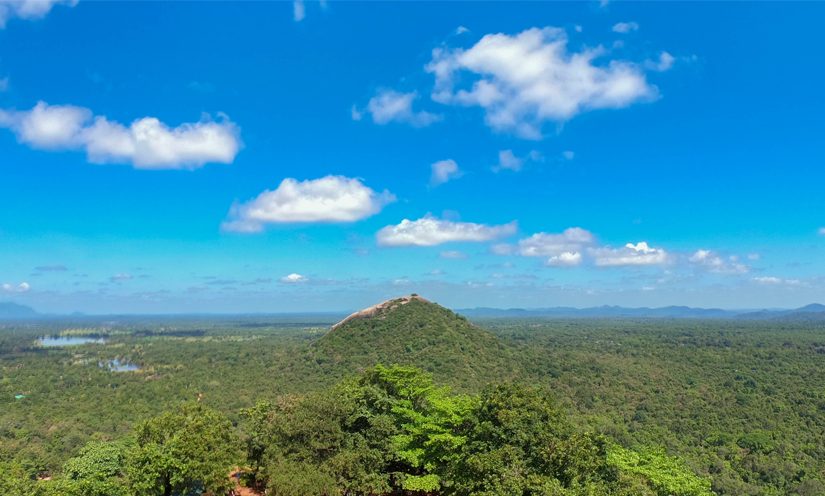
If you like to see a different view of Lion Rock and save a lot of money then climb up Pidurangala Rock. The entrance fee is just US$5.00. Both rocks are very impressive so try to climb both if you have the time.
Where to stay in Sigiriya
Sri Lanka Holiday Guru Tip
Start your day early. Avoid climbing at midday as it could get very hot.
Wear good shoes and take plenty of drinking water.
It’s banned to take plastic and polyethene to the Lion Rock at Sigiriya
There aren’t any shops to buy water or food once you’ve entered the site
Beware that on some parts of the rock face there are wasps’ nests, and they are quick to attack. Visitors must be extra careful and wear clothing that covers the body in case of an attack; it is also important to be extremely quiet on the way to the top so as not to provoke the wasps.
Avoid unofficial guides who claim they could take you through a less crowded entrance to the top.
Walking across the lawn is prohibited.
Combine visiting Sigiriya Lion Rock together with Polonnaruwa or Kandy




